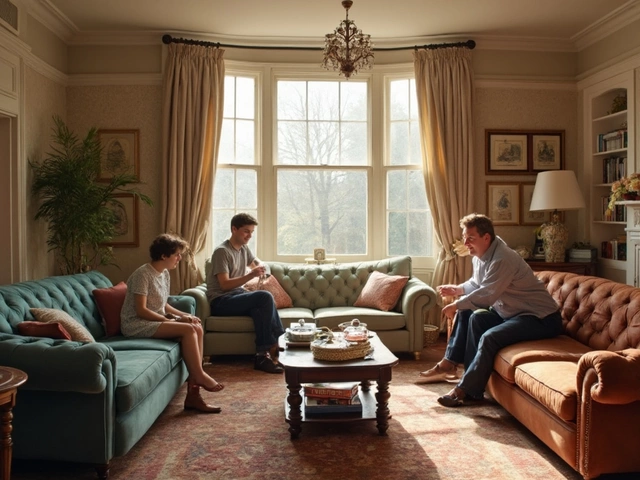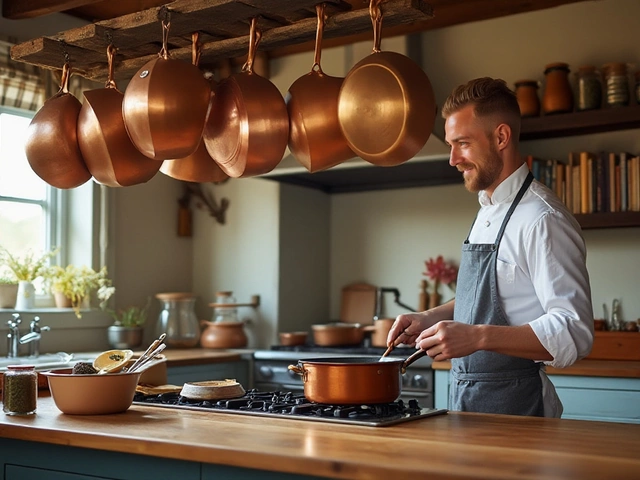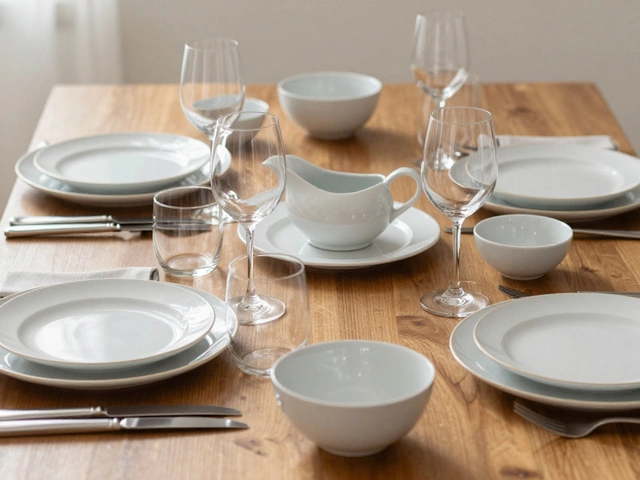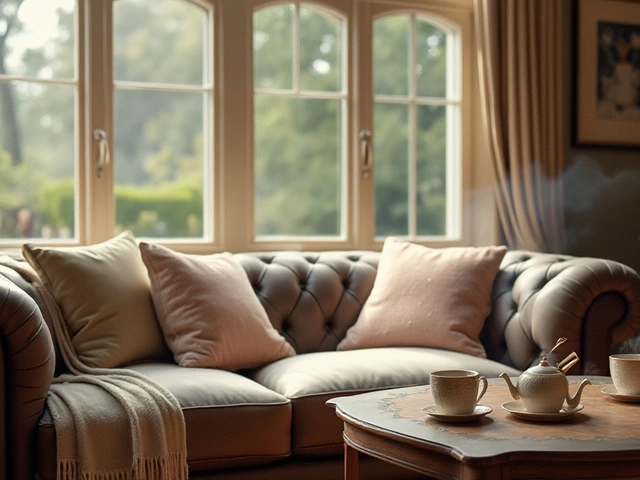The Lifespan of Affordable Sofas: What You Need to Know
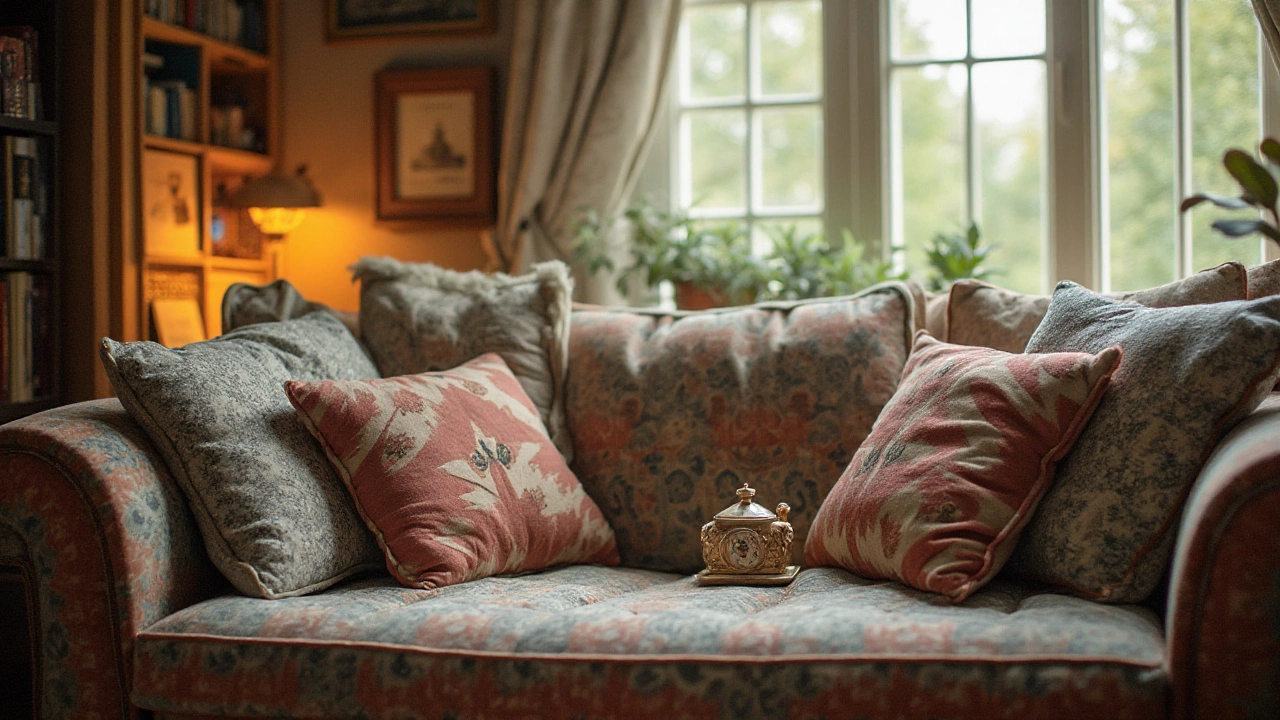
When you're searching for a new sofa, especially one that doesn't break the bank, understanding how long it might last is crucial. A sofa is more than just a seating piece; it's where movie marathons happen, where guests plop down for a chat, and where afternoon naps turn into dreams. So, the question is, what kind of longevity can you expect from an affordable sofa?
In this guide, we'll unravel the mysteries behind the lifespan of budget-friendly sofas. Whether you're purchasing your first couch or seeking a replacement, knowing what you're signing up for can save you from future headaches. From the heartbeat of materials to the echoes of daily wear, each aspect plays a role in how long your chosen couch will accompany your living space.
Understanding Sofa Lifespan
When it comes to cheap sofas, the lifespan can be a bit of a mystery to many. While a premium couch might boast a decade or more of life, affordable options often come with a shorter shelf life. This doesn't mean they're not worth considering, but understanding their potential endurance is crucial. In general, you can expect a cheaper sofa to last anywhere from five to ten years, depending on several factors including how it's used and the environment it's in. For instance, a sofa in a bustling family room might age faster than one in a rarely used guest room.
One key aspect that determines the longevity of a sofa is the quality of its construction. Frames made from solid wood generally outlast those made from particleboard or plastic. Joints that are dowelled or corner-blocked, rather than simply glued, offer more sturdiness. The suspension system also plays a role; sinuous springs are quite common in affordable couches, and while they offer decent support, they might not hold up as well over the long haul as eight-way hand-tied springs, often found in higher-end pieces.
A 2021 report by Furniture Today states, "An average American household might replace a middle-market sofa every 9-12 years, but those inclined towards budget pieces should anticipate a shorter cycle."
Not to forget, the choice of fabric also impacts longevity. Synthetic materials like polyester and nylon can be quite durable and resistant to stains, making them a popular choice for families. Natural fabrics, though aesthetically pleasing, may require more maintenance to keep looking their best. Regular usage and exposure to sunlight can fade colors and weaken fibers over time. Thus, a budget-friendly sofa, with suitable upkeep, can remain a cherished part of your living space for several years.
In exploring the lifespan of affordable sofas, it's beneficial to consider how often we interact with them. Sitting positions and habits, such as bouncing or hopping onto the couch, can contribute to its wear and tear. Pets and children can also affect its condition, either causing scratches or spilling drinks that might hasten its demise. Learning to spot signs of wear early, such as sagging cushions or creaking frames, can help in making timely repairs to prolong the furniture's life.
Ultimately, while a less expensive couch may not offer the longevity of high-end furniture, with careful selection and smart maintenance, it can reliably serve your household needs. This brings us to a pertinent question: for buyers seeking a balance between cost and durability, understanding when and where to invest more can make a significant difference. In the next section, we shall delve deeper into the materials that influence the endurance of a sofa and how they can shape your buying decision.
Material Matters
When it comes to the longevity of cheap sofas, the materials used in construction are a key factor. The fabric on your sofa's surface isn't just about aesthetics; it's the first line of defense against spills, stains, and everyday wear. Commonly, lower-priced sofas are upholstered in synthetic materials like polyester or microfiber. These fibers are designed to resist stains and can be surprisingly durable when cared for properly. On the structure side, frames made of engineered wood or particle board are typical in more affordable couches. While these materials keep costs down, they often lack the sturdiness offered by hardwood frames. A clever eye, however, might find blends that balance budget with quality, as some manufacturers enhance engineered wood with reinforcements.
Underneath the upholstery, cushions play a pivotal role in both comfort and durability. Cheap sofas might feature foam cushions, which initially give that soft comfort everyone loves to sink into. However, without the right density, these cushions can sag rather quickly under consistent use. More durable options often involve high-density foam or foam wrapped with layers of down, but these can hike up the cost. The secret lies in testing – if you're in-store, don't shy away from giving those cushions a thorough sit. Observe how they handle your weight and how swiftly they regain their shape.
It's interesting to note that various studies suggest that microfiber, due to its tightly woven strands, is less likely to harbor dust mites, making it a practical choice for families. This adds a health dimension to your budgeted purchase, especially if you have children or suffer from allergies. A well-known upholstery expert once quipped, "A sofa's material is its armor. Choose wisely and it might just outlast the trend it was born in."
Another consideration is the finish on wooden legs or accents. Though rarely the first thing buyers consider, the type of wood finish can impact longevity. Veneers or laminated finishes offer a polished look, but they can wear down or chip over time, particularly in households with pets who might claw or chew. Solid wood finishes, though pricier, tend to withstand daily abuse better. This sort of attention to detail might initially seem piddly but proves worthwhile when you aim to extend the lifespan of so-called affordable furniture.
On occasion, you may come across a budget sofa boasting advanced features like stain-resistant coatings or eco-friendly production methods, like using recycled materials. Stain-resistant technology, while potentially adding to the initial price, can dramatically extend the life of a sofa's fabric, maintaining its fresh appearance for longer periods. Eco-friendly options don't just offer better sustainability credentials; in some cases, they utilize materials designed to endure without the environmental footprint. As the old saying goes, knowledge is power. Taking the time to understand the materials that form the backbone of your sofa is crucial in ensuring that you've made an informed and lasting investment.

Wear and Tear
A cheap sofa provides a cozy nook for relaxation but over time, the wear and tear can reveal its true resilience. Frequent use introduces a host of challenges, from the sagging of cushions to the creak of once-silent springs. Daily activities, like jumping kids or energetic pets, can accelerate this inevitable decline. The type of fabric covering the sofa plays a big role; while microfiber might resist stains, it can be prone to pilling, while faux leather may peel or crack with too much sun.
Now consider the frame—the core skeleton of your affordable couches. Many budget-friendly options use particleboard, and while it’s a sound material for short-term use, it can warp or break under constant pressure. Not all wear is visible at first glance, so knowing what lies beneath the upholstery becomes paramount. A heavyweight guest flopping down without minding their force is enough to send it on a path of no return.
The environment also contributes heavily. Humid areas can weaken glues and bonds in the frame and upholstery, while constant sunlight bleaches and weakens fabric fibers. As days turn into years, the sturdiness often weakens, requiring a watchful eye and gentle care.
"A sofa must be like a companion, there for you without a hitch," advises renowned interior designer Emily Henderson.
Regular maintenance and early repairs can significantly extend the lifespan. Vacuuming regularly keeps dirt from grinding into the fabric, and using cushion flips takes uneven pressure off specific spots. Sticking to a gentle detergent helps maintain fabric integrity—small efforts like these promise a big difference in preserving the sofa's life.
Maintenance Tips
Keeping your cheap sofa in good condition requires more than just an occasional dust-off. Regular maintenance is key when you're attempting to extend the life of your affordable couch. One of the first things to consider is your sofa's fabric or material type. For instance, microfiber and synthetic blends, popular in budget-friendly designs, benefit significantly from regular vacuuming and gentle spot cleaning. By removing dirt and debris early, you prevent particles from embedding themselves into the fabric, which can lead to premature wear and unsightly blemishes.
Another important aspect is protecting your sofa from direct sunlight, which can cause fading over time. If your furniture sits near a window, consider rotating its position within the room every few months. This simple swap not only helps in maintaining uniform color but can also serve to distribute any strain placed on the couch. Sofa cushions, in particular, should be flipped and rotated regularly to minimize sagging and uneven usage. This habit can help maintain the form and comfort of your cushions, which are critical for seating satisfaction.
Cleaning Techniques
Embracing proper cleaning techniques is a game changer. For spot treatments, always test a small, unseen section of the fabric first with any new cleaners. Using harsh chemicals can quickly degrade material quality, so opt for gentle, mild soap solutions when dealing with stain removal. When in doubt, a little baking soda sprinkled on fabric can absorb odors and is safe for most surfaces. Keeping the air around your sofa clean can also greatly impact its longevity. Dust and dirt accumulate over time, and regular air circulation through open windows or air purifiers can minimize these nuisance particles.
Alice Borchardt, a renowned interior designer, once said, 'The way we maintain our couch reflects not just on the furniture but the ambience of our entire space.'
Investing time in maintaining the fixtures of your home, no matter their initial cost, contributes to a more welcoming and stylish living environment. Utilizing throws or decorative blankets can also shield your affordable couch from the daily rigors of life, while injecting a new style into your room. Choose washable throws that can easily be laundered to remove dust and spills.
Seasonal Sofa Care
Don't forget seasonal sofa care as part of your routine. As seasons change, so do the demands on your furniture. During winter months, your home might become more susceptible to dryness and static. Consider using a humidifier to keep the air balanced, which in return can help in keeping the sofa's material supple. Similarly, in the summer, protect your furniture from sticky sweat and moisture by using some additional slipcovers or sofa liners made of breathable fabric, aiming to reduce direct contact while people sit.
Affordable couches often get a bad reputation for not standing the test of time, yet, with effective maintenance, you can defy the odds. Paying attention to these details not only ensures your sofa remains comfortable and inviting but also means your initial investment persists well beyond what's expected.
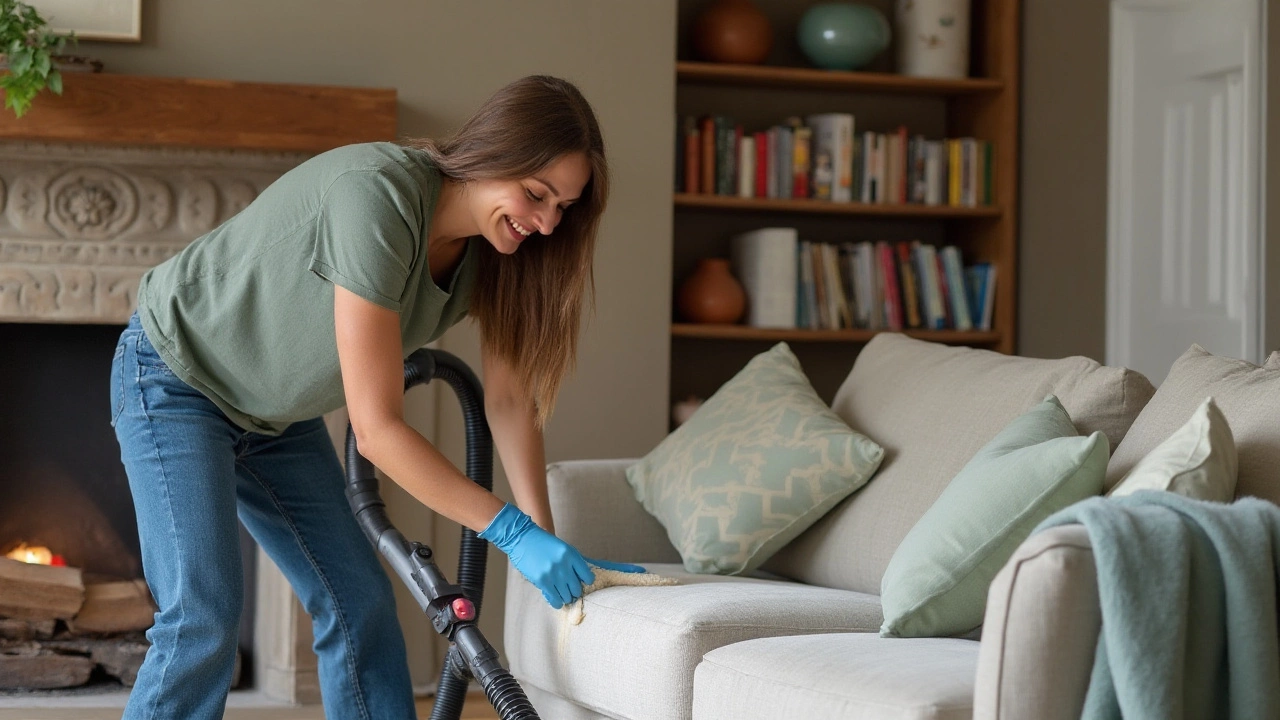
Investment Perspective
So, you're standing in the furniture section of a store, wondering if you should spend a modest amount on a cheap sofa or dig a little deeper into your pockets for something more luxurious. It's a classic dilemma — one that hinges on the concept of value over time. The initial cost savings might be appealing, but understanding the investment perspective is essential if you want to make a decision that suits your lifestyle and your finances.Affordable couches often mean lower upfront costs, which can be a lifesaver in a pinch. But they might not always be the best choice for the long haul, especially if they face heavy use.
Think about a sofa as a long-term companion. If you're someone who values comfort and durability, you might find that investing a bit more upfront could save you money down the line by reducing the frequency of replacements. A more expensive sofa, with high-quality materials, often comes with hidden benefits such as more intricate stitching and sturdier legs, which can withstand the test of time and the many years of lounging it will support. This can be particularly useful for furnishing common spaces like living rooms, which see a lot of daily activity. "It's better to pay a little more for something that lasts," says interior designer Emily Henderson. She emphasizes that the longevity of furniture often warrants the additional initial expense when possible.
Here's where the choice becomes a bit more data-driven. Consider creating a simple table to compare costs over the lifespan of a sofa. For example:
| Sofa Type | Average Lifespan | Cost Per Year |
|---|---|---|
| Budget Sofa | 5 years | $100 |
| Mid-range Sofa | 10 years | $75 |
| Luxury Sofa | 15 years | $67 |
As seen in the table above, a budget sofa, despite the smaller sticker price, might end up costing more per year of use compared to higher quality sofas. This highlights an important aspect of shopping smartly for furniture. The data suggests that higher initial investments can translate to greater yearly savings and satisfaction, especially when the opportunity to avoid frequent purchases is considered. This doesn't mean a cheap sofa doesn't have its place, particularly for those in transitional phases or seeking temporary solutions. But looking through the lens of investment, there's much more to be considered beyond the immediate cost.

